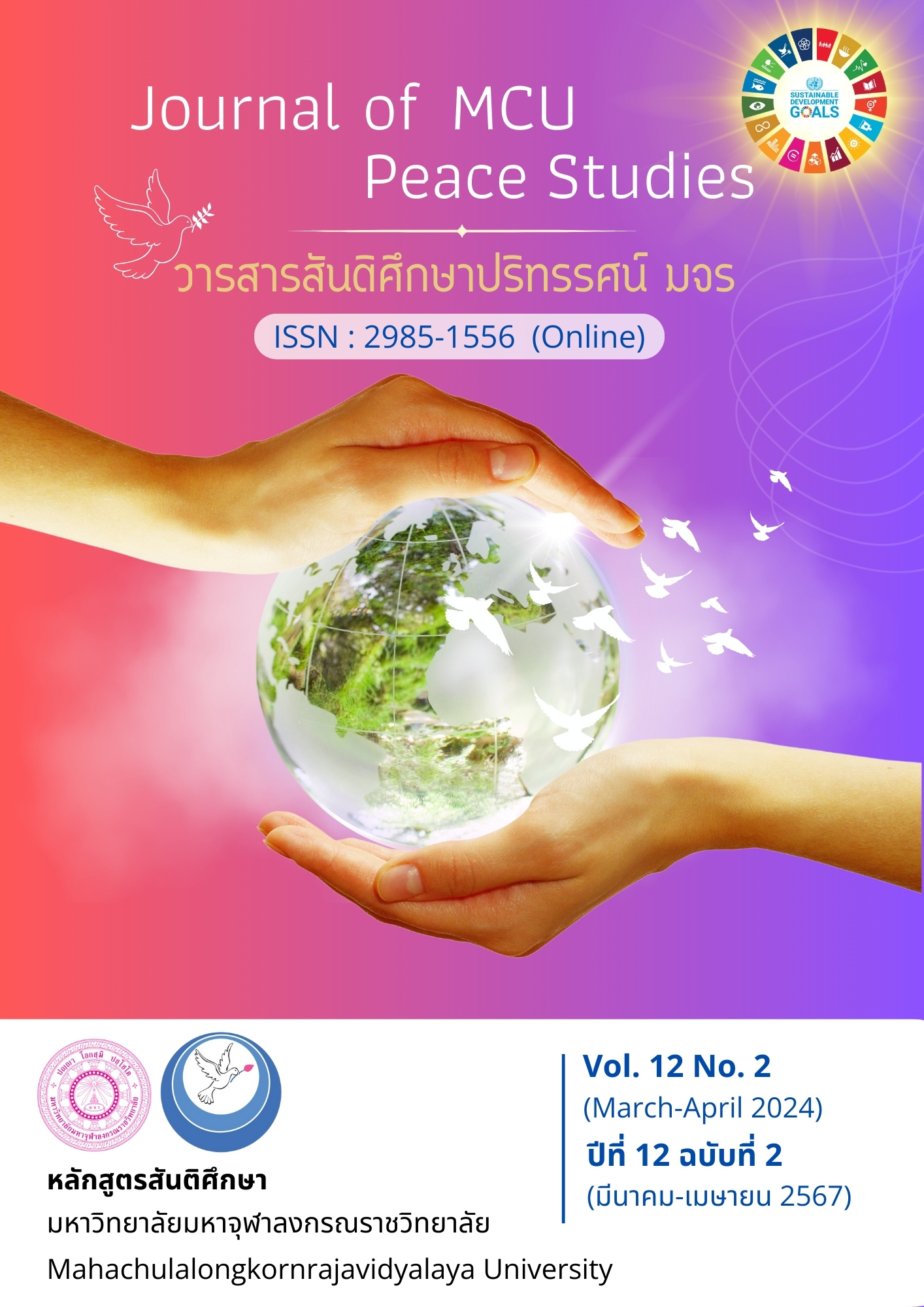The Efficient Human Resource Management Based on Ariyā Vaḍḍhi
Main Article Content
Abstract
The research article aimed to provide knowledge and understanding about the enhancement of human resources through the application of Ariyā Vaḍḍhi (the five noble growths). Using the Buddhadhamma as a guide will help the organization to succeed according to the set goals and objectives. The guidelines for increasing human resources based on Ariyā Vaḍḍhi include the following: 1) Saddhā, refers to confidence based on reasons and truths, leading to concentration and wisdom; 2) Sīla, refers to good conduct by not troubling others and having a stable mind; 3) Suta, refers to the learning that will lead to greater success in life; 4) Cāga, refers to sacrificing oneself and sharing for the benefits of others; and 5) Paññā, refers to knowledge and reasons. Improving resource management capacity is achieved by empowering employees to continuously develop their knowledge, skills, and abilities as well as their personal qualities and motivation. This includes the following processes: 1) Work design and analysis; 2) Human resource planning; 3) Recruitment and selection; 4) Orientation and performance assessment; and 5) Procedure training and development. All of these factors contribute to the efficiency of human resource development by fostering learning and knowledge exchange within the organization, resulting in improved quality of work, increased knowledge and skills, good time management that matches the amount of work, increased capacity, and satisfaction with operations. As a result, the organization will meet the set quality standards, effectively manage the quantity of work and duration, and maximize resources while reducing expenses and costs. To be effective in human resource management, modern science management must be combined with Buddhadhamma before being applied to organizational management.
Article Details

This work is licensed under a Creative Commons Attribution-NonCommercial-NoDerivatives 4.0 International License.
Views and opinions expressed in the articles published by The Journal of MCU Peace Studies, are of responsibility by such authors but not the editors and do not necessarily reflect those of the editors.
References
Dessler, G. (2009). A Framework for Human Resource Management. (5th ed.). New Jersey: Pearson Education.
George, J. M. (2019). State or trait: Effects of Positive Mood on Prosocial Behaviors at Work. Journal of Applied Psychology, 76(2), 299-307.
Khiewngamdee, W. (2012). The Enhancement of Efficient Human Resource Management in the Public Sector Using Core Competencies Concept. Silpakorn University Journal, (Social Sciences, Humanities, and Arts), 32(1), 8-10.
Mondy, R. M. et al. (1999). Premeaux Human Resource Management. (7th ed.). Upper Saddle River, NJ: Schuster.
Peterson, E., & Plowman, E.G. (1989). Business Organization and Management. Homewood, Ilinois: Richard D. Irwin.
Phakru Sutahphattaradham et al. (2020). Ariyā Vaḍḍhi 5 as the Desirable Characteristics of Youth. Journal of Modern Learning Development, 5(2), 263-265.
Phra Dhammapitaka (P.A. Payutto). (1997). Measurement of Buddhist Prosperity (Ariyā Vaḍḍhi). (7th ed.). Bangkok: Sahathammik Company Limited.
Prasopmoh, P. (2021). Factors Affecting Performance Efficiency of Employee of the Department of Rural Roads 2 (Saraburi). Tree-Science Journal, 7(1), 210-211.
Siripap, P. et al. (2021). Human Resource Management that Affects Organizational Commitment of Personnel at Thai Higher Education Institutions. Journal of Administrative Administration, 10(1), 196-220.


